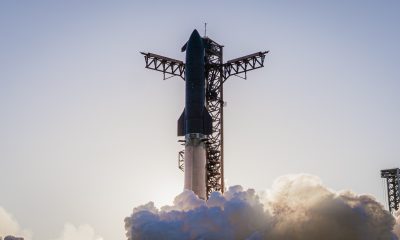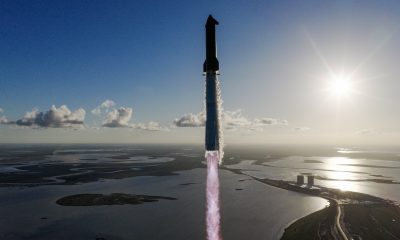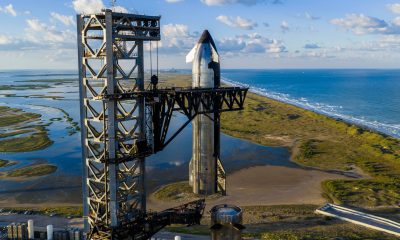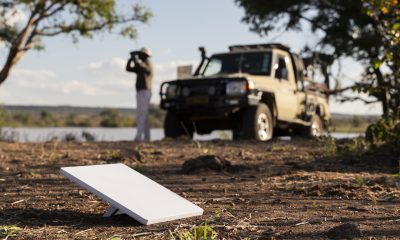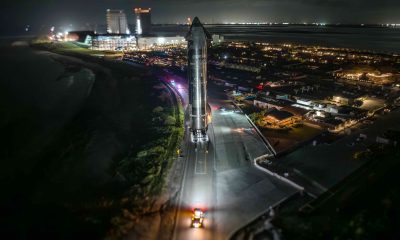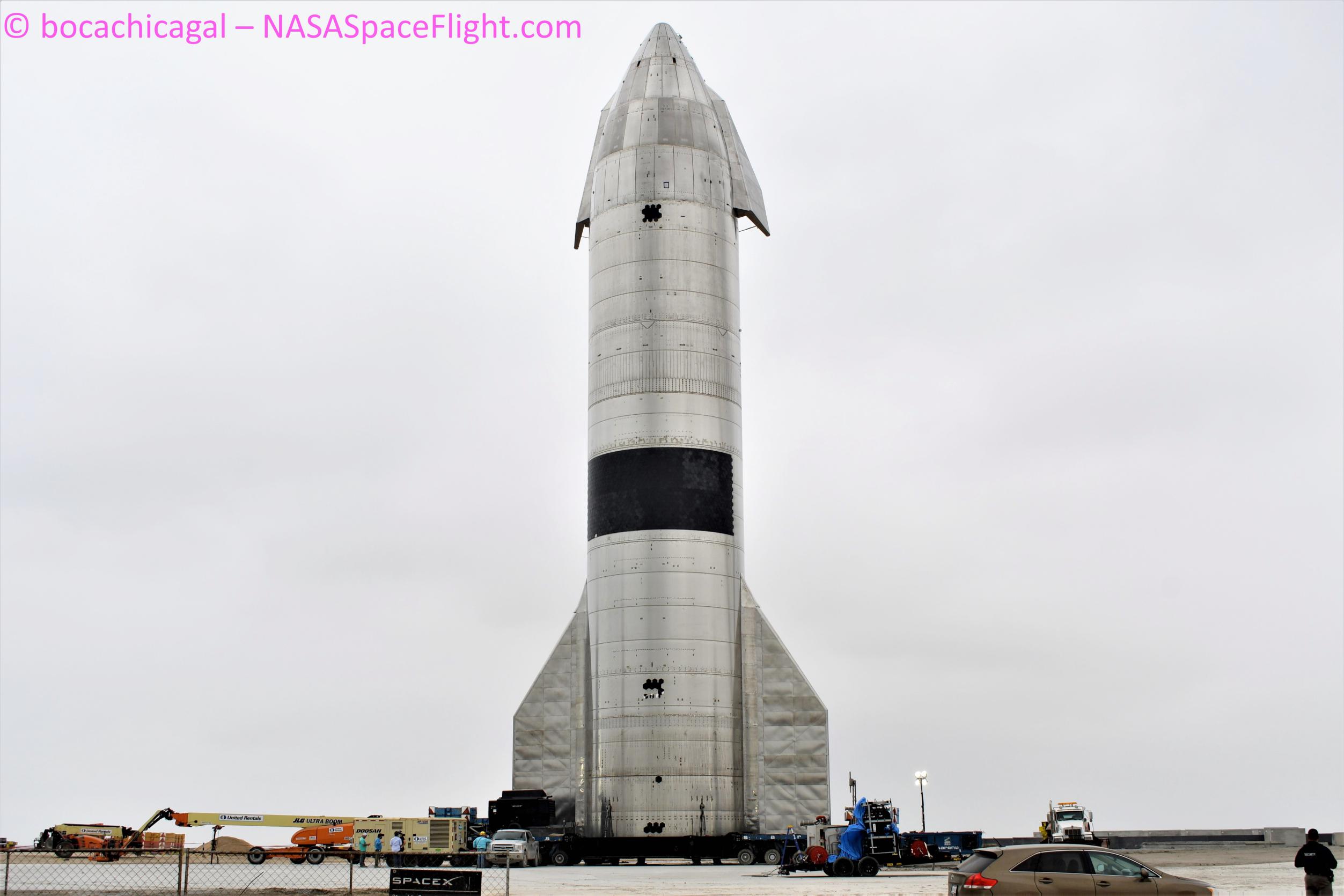
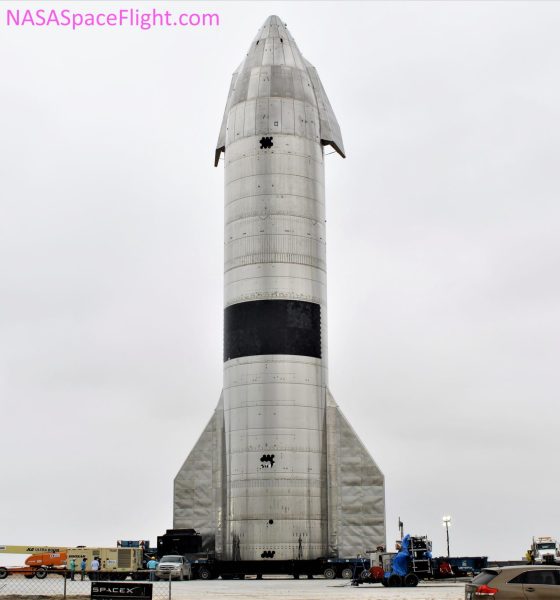
News
SpaceX’s first flight-proven Starship heads back to launch pad for round two
Defying most expectations, SpaceX has moved the first full-size flight-proven Starship back to the launch pad less than a week after the prototype survived a high-altitude launch and landing.
Two days after that spectacular launch and four days ago, CEO Elon Musk revealed that SpaceX “might try to refly [Starship] SN15 soon,” indicating that the rocket landed in excellent condition. While Starship SN15’s ~10 km launch was far less stressful than those experienced by orbital-class Falcon boosters, reusing the first successfully recovered Starship prototype mere weeks after that first landing would be an extraordinary achievement given that SpaceX took more than 15 months to reuse a Falcon booster after the rocket’s first landing.
Early on Tuesday, May 11th, Starship prototype SN15 began to move for the second time since its May 5th launch and landing. Carried by a custom transporter designed to secure landed Starships without the need for a crane, SN15 was carefully rolled a few hundred feet from the landing zone to “Suborbital Mount B” – one of two identical launch mounts. Used by Starship SN15 throughout its test and launch campaign, Mount A is in the process of being refurbished.
While SpaceX has yet to actually install Starship SN15 on Mount B, the prototype has been attached to a crane and said installation is imminent – possibly just waiting for winds to die down. As of publishing, SpaceX has removed SN15’s six ‘used’ landing legs but hasn’t replaced them – a necessary step before the Starship can fly again.
It’s unclear if legs can be installed after a Starship is affixed to a launch mount, meaning that SpaceX might also be waiting for winds to die down so it can lift SN15 off its transporter and replace its legs – an understandably sensitive process given the need for workers to clamber under and around a 100+ metric ton rocket hanging in the breeze.
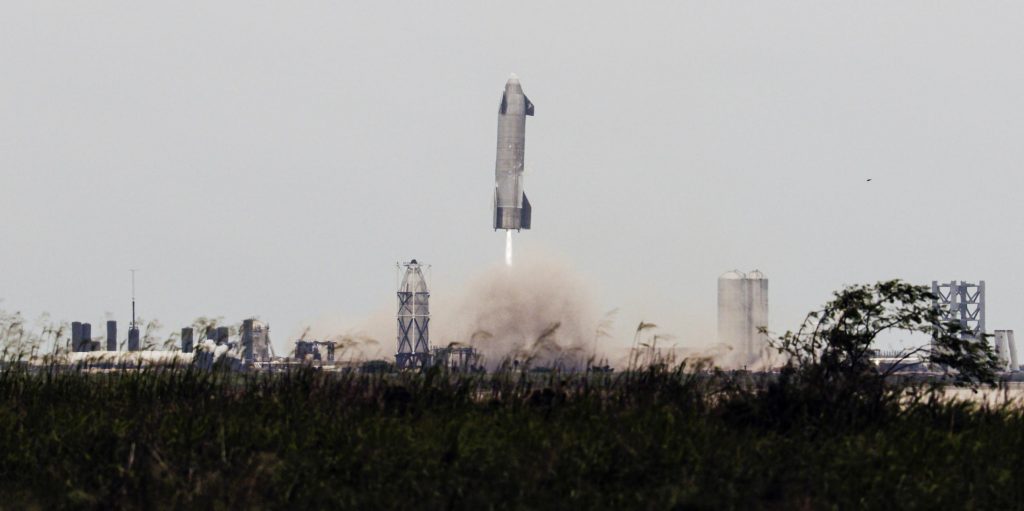
It’s worth noting that even after SpaceX reinstalls Starship SN15 on a launch mount, there’s no guarantee that the prototype will fly again. Before any reflight, SpaceX will almost certainly put the rocket through at least one additional tank proof test and static fire its Raptor engines. Issues or damage that escaped initial post-flight inspections could easily arise during that process and it’s more likely than not that one or more of SN15’s three Raptors will be removed for detailed inspection or replaced outright.
For now, stay tuned as SpaceX prepares to install Starship SN15 on a launch mount for the second time and the company’s next steps hopefully come into focus.
News
Tesla might be doing away with a long-included feature with its vehicles
It appears Tesla is mulling the possibility of not including key cards with its vehicles any longer.
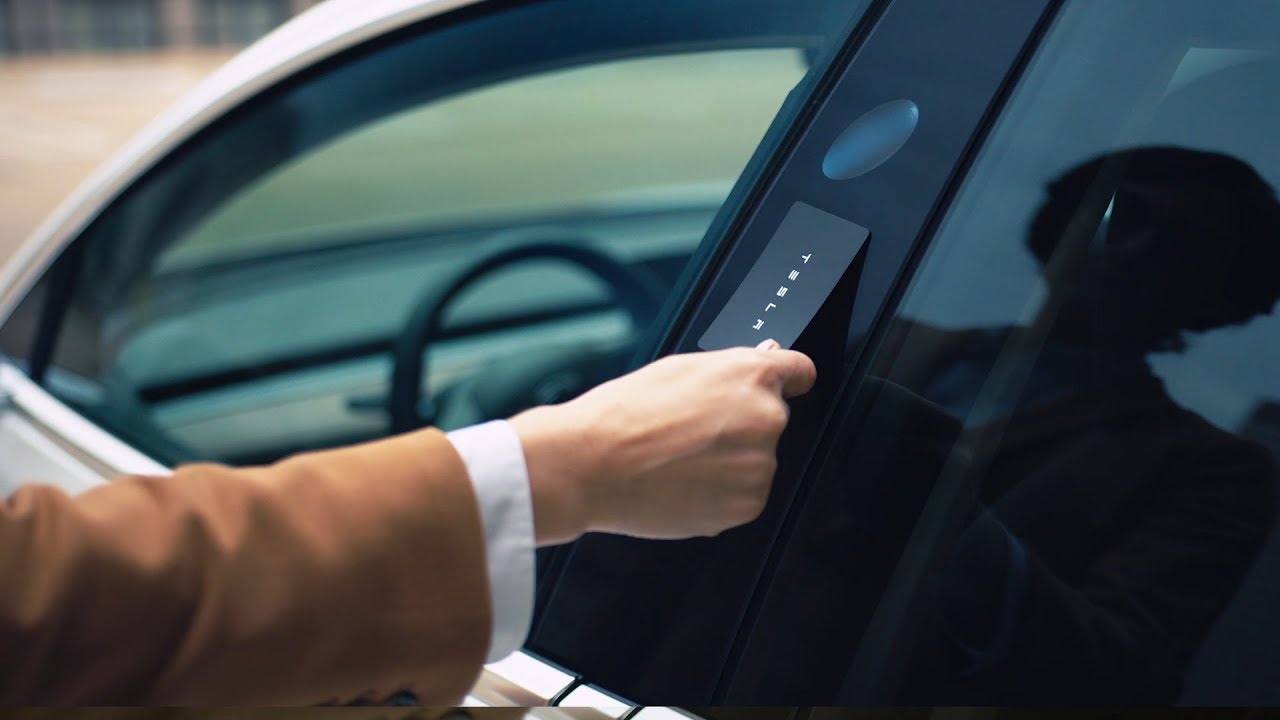
Tesla might be doing away with a long-included feature with its vehicles, as it could be looking to phase out something that very few owners utilize.
Tesla Key Cards are included when you purchase your vehicle, and they assist in the initial setup process. However, after that, they are not super useful or relevant to the owner, as many rely on their Phone Key through the Tesla App to access their cars.
As such, it appears Tesla is mulling the possibility of not including key cards with its vehicles any longer. According to some language that has been removed from vehicle Owner’s Manuals that talks about the inclusion of key cards with the car upon delivery:
“Tesla provides you with two Model 3/Y key cards, designed to fit in your wallet.”
That sentence was removed from Owner’s Manuals, according to Not a Tesla App, which first spotted the change.
Tesla Model 3 owner implants RFID key card chip into her arm as ultimate hack to unlock door
Interestingly, the timing of the phrase being removed from Owner’s Manuals comes just after Tesla launched its “affordable” Standard Models, and could be a small money-saving measure for the company.
Key Cards have been utilized by Tesla for its cars since 2017, as they became an included accessory with the vehicle. They still have their place and are useful for other applications, such as Valet service and even to be used by car owners if their phone is dead or if someone else needs to get into the car.
They can also be purchased in the Tesla Shop for $40.
It seems as if Tesla is planning to have owners be completely reliant on the Phone Key, which is more useful and convenient than carrying around the Key Cards.
Although it is minor, it is yet another strategy Tesla is using to trim any sort of costs that can be eliminated and could save money in the long run.
News
Elon Musk confirms Tesla FSD V14.2 will see widespread rollout
Musk shared the news in a post on social media platform X.
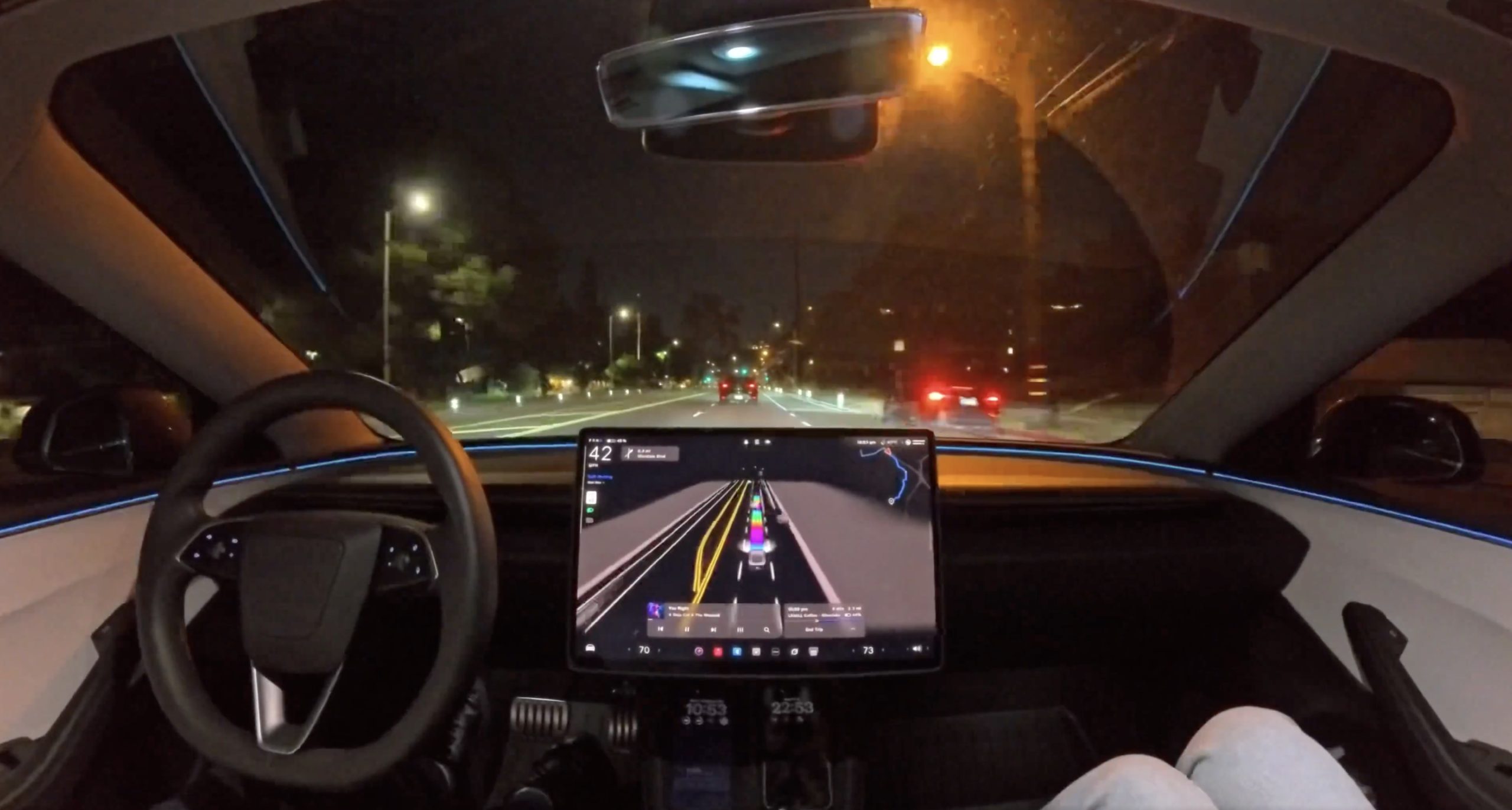
Elon Musk has confirmed that Tesla will be implementing a wide rollout of Full Self-Driving (FSD) V14 with the system’s V14.2 update. Musk shared the news in a post on social media platform X.
FSD V14.1.2 earns strong praise from testers
Musk’s comment came as a response to Tesla owner and longtime FSD tester AI DRIVR, who noted that it might be time to release Full Self-Driving to the fleet because V14.1.2 has already become very refined.
“95% of the indecisive lane changes and braking have been fixed in FSD 14.1.2. I haven’t touched my steering wheel in two days. I think it’s time, Tesla AI,” the longtime FSD tester wrote.
AI DRIVR’s comment received quite a bit of support from fellow Tesla drivers, some of whom noted that the improvements that were implemented in V14.1.2 are substantial. Others also agreed that it’s time for FSD to see a wide release.
In his reply to the FSD tester, CEO Elon Musk noted that FSD V14’s wide release would happen with V14.2. “14.2 for widespread use,” Musk wrote in his reply.
Mad Max mode makes headlines
One of the key features that was introduced with FSD’s current iteration is Mad Max mode, which allows for higher speeds and more frequent lane changes than the previous “Hurry” mode. Videos and social media posts from FSD testers have shown the system deftly handling complex traffic, merging seamlessly, and maintaining an assertive but safe driving behavior with Mad Max mode engaged.
Tesla AI head Ashok Elluswamy recently noted in a post on X that Mad Max mode was built to handle congested daytime traffic, making it extremely useful for drivers who tend to find themselves in heavy roads during their daily commutes. With Musk now hinting that FSD V14.2 will go on wide release, it might only be a matter of time before the larger Tesla fleet gets to experience the notable improvements of FSD’s V14 update.
News
Multiple Tesla Cybercab units spotted at Giga Texas crash test facility
The vehicles were covered, but one could easily recognize the Cybercab’s sleek lines and compact size.
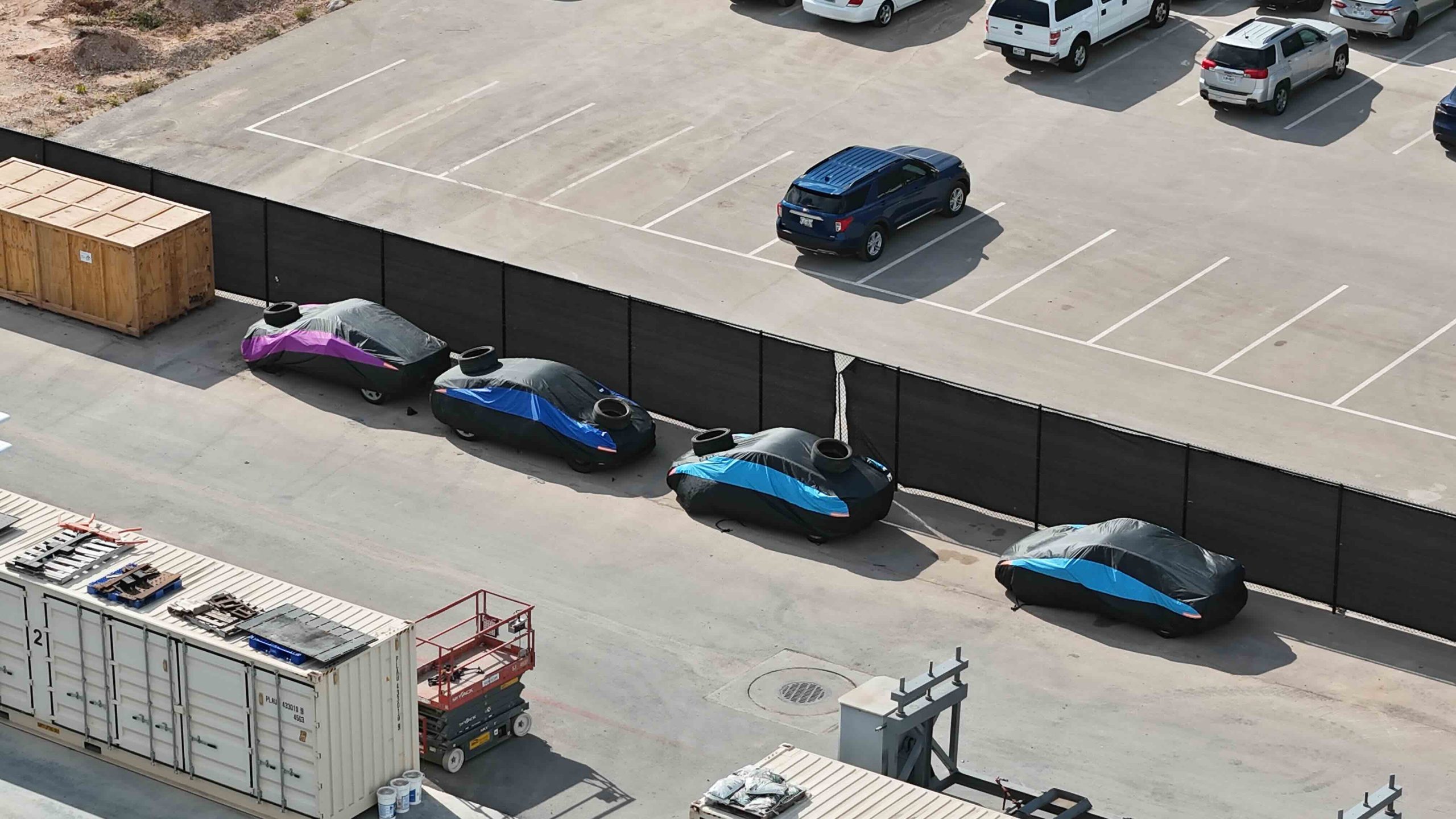
It appears that Tesla is ramping up its activities surrounding the development and likely initial production of the Cybercab at Giga Texas. This was, at least, hinted at in a recent drone flyover of the massive electric vehicle production facility in Austin.
Cybercab sightings fuel speculations
As observed by longtime Giga Texas drone operator Joe Tegtmeyer, Tesla had several covered Cybercab units outside the facility’s crash testing facility at the time of his recent flyover. The vehicles were covered, but one could easily recognize the Cybercab’s sleek lines and compact size. Tegtmeyer also observed during his flyover that production of the Model Y Standard seems to be hitting its pace.
The drone operator noted that the seven covered Cybercabs might be older prototypes being decommissioned or new units awaiting crash tests. Either scenario points to a ramp-up in Cybercab activity at Giga Texas, however. “In either case, this is another datapoint indicating production is getting closer to happening,” Tegtmeyer wrote on X, highlighting that the autonomous two-seaters were quite exciting to see.
Cybercab production targets
This latest sighting follows reports of renewed Cybercab appearances at both the Fremont Factory and Giga Texas. A test unit was recently spotted driving on Giga Texas’ South River Road. Another Cybercab, seen at Tesla’s Fremont Factory, appeared to be manually driven, suggesting that the vehicle’s current prototypes may still be produced with temporary steering controls.
The Tesla Cybercab is designed to be the company’s highest-volume vehicle, with CEO Elon Musk estimating that the autonomous two-seater should see an annual production rate of about 2 million units per year. To accomplish this, Tesla will be building the Cybercab using its “Unboxed” process, which should help the vehicle’s production line achieve outputs that are more akin to consumer electronics production lines.
-

 Elon Musk2 days ago
Elon Musk2 days agoSpaceX posts Starship booster feat that’s so nutty, it doesn’t even look real
-

 Elon Musk1 day ago
Elon Musk1 day agoTesla Full Self-Driving gets an offer to be insured for ‘almost free’
-

 News1 day ago
News1 day agoElon Musk confirms Tesla FSD V14.2 will see widespread rollout
-

 News2 days ago
News2 days agoTesla is adding an interesting feature to its centerscreen in a coming update
-

 News4 days ago
News4 days agoTesla launches new interior option for Model Y
-

 News3 days ago
News3 days agoTesla widens rollout of new Full Self-Driving suite to more owners
-
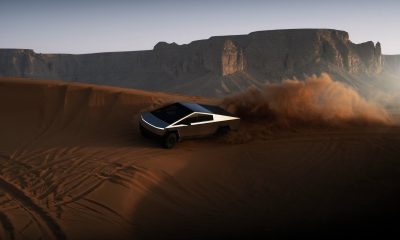
 News4 days ago
News4 days agoTesla makes big move with its Insurance program
-

 Elon Musk2 days ago
Elon Musk2 days agoTesla CEO Elon Musk’s $1 trillion pay package hits first adversity from proxy firm


